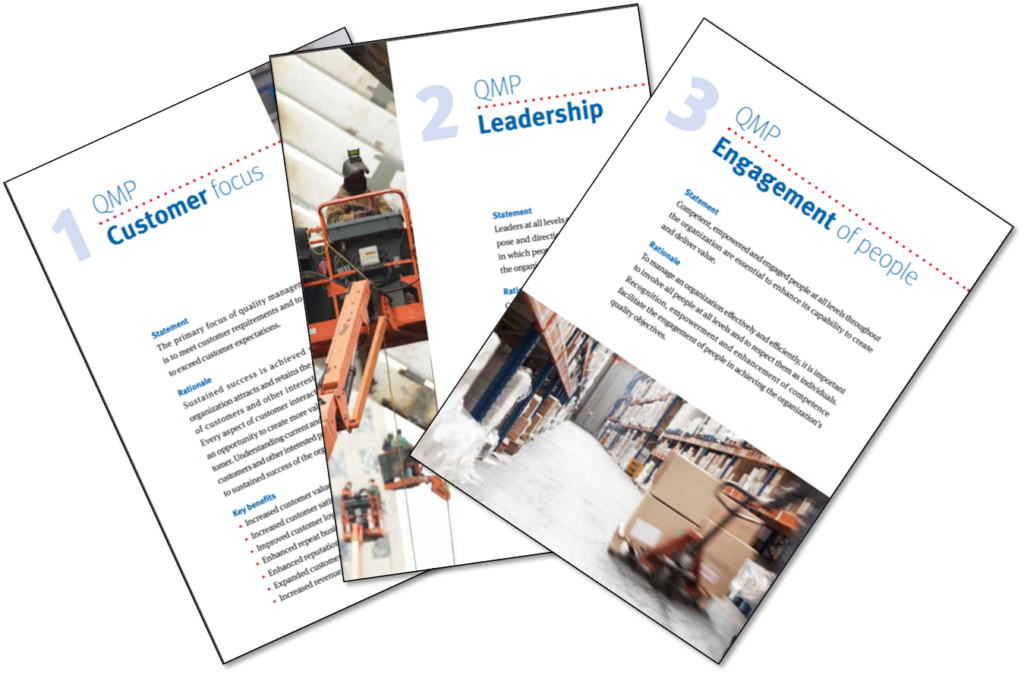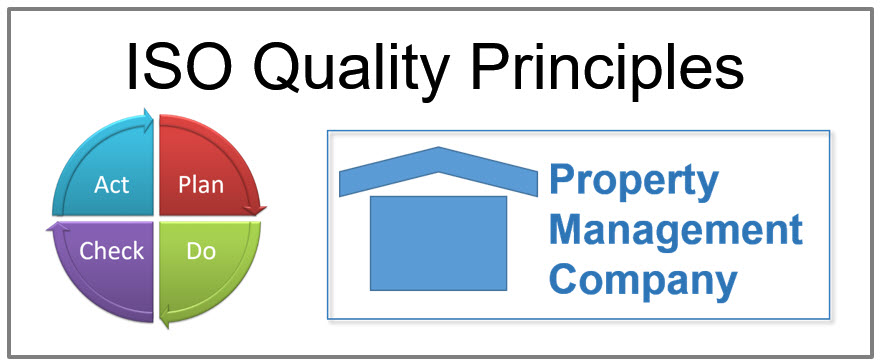Property management companies that will get the most value from analytics are those that a) have clearly stated goals and targets, and b) are taking action to make improvement in one or more areas of operations. All this is easier to understand in the context of the ISO Quality Management Principles, and I am going to elaborate on these here.
Note: I expect this article to be particularly useful to companies that have or are seeking the Accredited Management Organization (AMO) credentials from IREM. See the AMO requirements here.
When I begin a conversation with a prospective customer of my consulting practice, I ask them if they already use metrics and if they have any formal quality programs. The likelihood of my giving them value is greater if they respond affirmatively.
ISO, the standards organization, has published a list of “Quality Management Principles”. These principles have become the foundation of performance improvement plans of thousands of successful companies across many different industries. It is very common to meet people working in manufacturing, healthcare or logistics who are conversant in Six Sigma, LEAN processes, the Deming Philosophy etc. Such knowledge and experience is rare in property management.
The Quality Management Principles (QMP)
I will provide a “Cliff Notes” version of the ISO Quality Management Principles here.
There are Seven Quality Management Principles (QMP):
QMP 1 – Customer focus
QMP 2 – Leadership
QMP 3 – Engagement of people
QMP 4 – Process approach
QMP 5 – Improvement
QMP 6 – Evidence-based decision making
QMP 7 – Relationship management
The QMPs can be used as a foundation to guide an organization’s performance improvement.
QMP1 – Customer Focus
The primary focus of quality management is to meet customer requirements and to strive to exceed customer expectations.
Benefits:
- Increased customer satisfaction
- Improved customer loyalty
- Enhanced repeat business
- Enhanced reputation of the organization
- Expanded customer base
QMP2 – Leadership
Leaders at all levels establish unity of purpose and direction and create conditions in which people are engaged in achieving the organization’s quality objectives.
Benefits:
- Increased effectiveness and efficiency
- in meeting the organization’s quality objectives
- Better coordination of the organization’s processes
- Improved communication between levels and functions of the organization
- Development and improvement of the capability of the organization and its people to deliver desired results
QMP3 – Engagement of People
Competent, empowered and engaged people at all levels throughout the organization are essential to enhance its capability to create and deliver value.
Benefits:
- Enhanced involvement of people in improvement activities
- Enhanced personal development, initiatives and creativity
- Enhanced people satisfaction
- Enhanced trust and collaboration throughout the organization
QMP4 – The Process Approach
Consistent and predictable results are achieved more effectively and efficiently when activities are understood and managed as interrelated processes that function as a coherent system.
Benefits:
- Enhanced ability to focus effort on key processes and opportunities for improvement
- Consistent and predictable outcomes through a system of aligned processes
- Optimized performance through effective process management, efficient use of resources, and reduced cross-functional barriers
- Enabling the organization to provide confidence to interested parties as to its consistency, effectiveness and efficiency
QMP5 – Improvement
Successful organizations have an ongoing focus on improvement
Benefits:
- Improved process performance, organizational capabilities and customer satisfaction
- Enhanced focus on root-cause investigation and determination, followed by prevention and corrective actions
- Enhanced ability to anticipate and react to internal and external risks and opportunities
- Enhanced consideration of both incremental and breakthrough improvement
- Improved use of learning for improvement
- Enhanced drive for innovation
QMP6 – Evidence-based Decision Making
Decisions based on the analysis and evaluation of data and information are more likely to produce desired results
Benefits:
- Improved decision-making processes
- Improved assessment of process performance and ability to achieve objectives
- Improved operational effectiveness and efficiency
- Increased ability to review, challenge and change opinions and decisions
- Increased ability to demonstrate the effectiveness of past decisions
QMP7 – Relationship Management
For sustained success, an organization manages its relationships with interested parties, such as suppliers.
Benefits:
- Enhanced performance of the organization and its interested parties through responding to the opportunities and constraints related to each interested party
- Common understanding of goals and values among interested parties
- Increased capability to create value for interested parties by sharing resources and competence and managing quality-related risks
- A well-managed supply chain that provides a stable flow of goods and services
Common Sense?
The statements after each QMP sound like common sense. It is good to know that such common sense has been formalized and hundreds of thousands of people have been introduced to these concepts and are applying Quality Management Principles in their jobs. If you are in general agreement with these principles, you are very likely to realize high value from investing in analytics.

The ISO Quality Management Principles also apply to Property Management Companies


